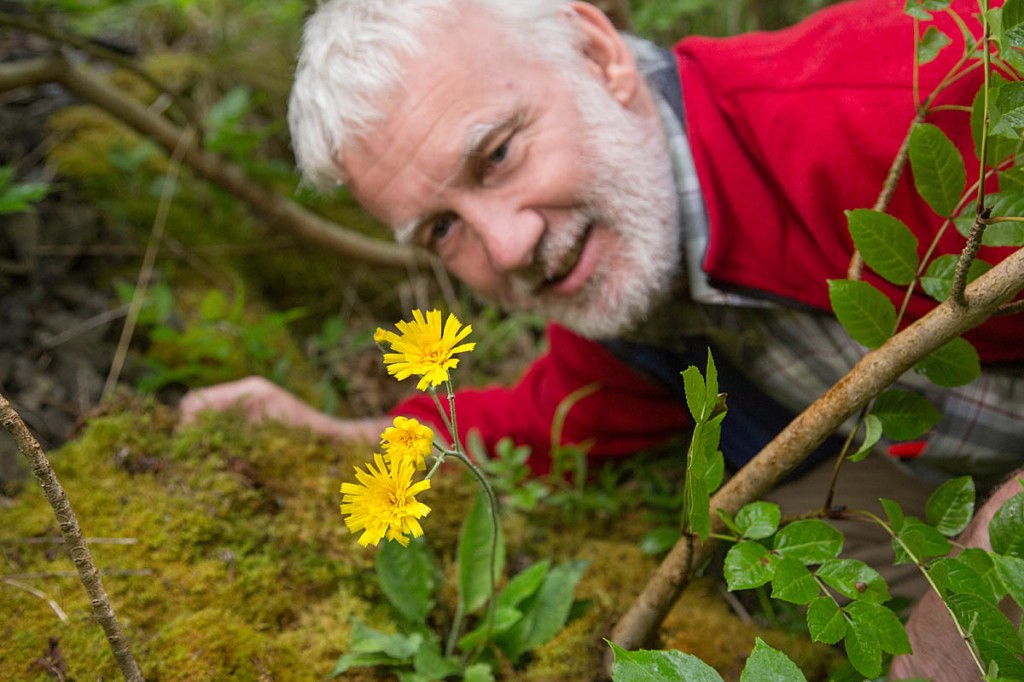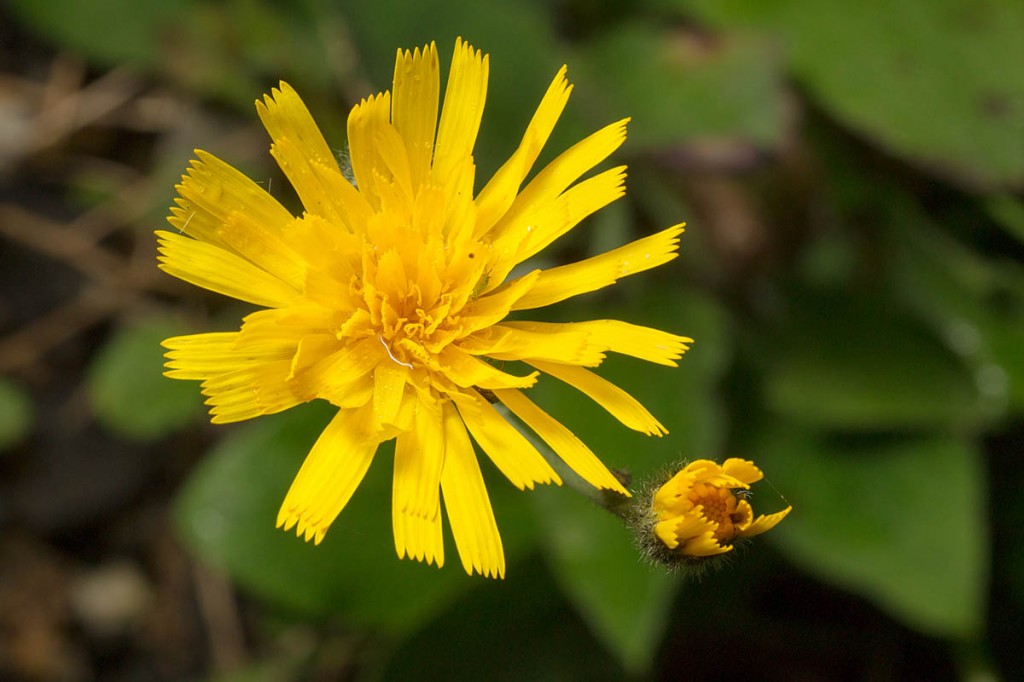A rare plant that was believed extinct has been discovered on a popular Peak District trail.
Two small populations of the leek-coloured hawkweed have been found flowering on the banks of the Monsal Trail, in Chee Dale.
Scientists believed the species ceased to exist a few years ago, but 62 plants in the two groups were found by Dr Tim Rich on land owned by the national park authority and Derbyshire Wildlife Trust.
Leek-coloured hawkweed flowers are yellow, similar to a dandelion but smaller. The plant gets its name because its leaves are the same chalky-green as the vegetable leek.
The discovery of Hieracium subprasinifolium, to give the plant its botanical name, was made by Dr Tim Rich while collecting seeds for Kew’s Millennium Seed Bank.
He said: “Leek-coloured hawkweed has not been seen in Derbyshire for over 60 years and is thought to have died out at its only other known world site in Staffordshire a few years ago, so I was very, very pleased to find these two small but healthy populations growing near the Monsal Trail.
“Hawkweeds are fascinating and unusual plants. We know of more than 400 species of hawkweed in Britain. Many are very uncommon or rare, and include British hawkweed, Dales hawkweed and Derby hawkweed, which are unique to the Peak District.”
It is the first time leek-coloured hawkweed has been officially identified and recorded in the area since the 1950s. It is native to Britain but has only ever been recorded at four sites in the Peak District. It is not known anywhere else in the world.
Chee Dale is now the only known location in the world that the plant is found. It is a member of the Compositae family, which includes dandelions and daisies. Like dandelions each petal is in fact an individual flower, with lots bunched together to form a single flower-head.
Rhodri Thomas, natural environment and rural economy team manager for the Peak District national park, said: “We are delighted with the discovery of Hieracium subprasinifolium close to the Monsal Trail – it’s one of the best indications we could ask for to show that the work we do to look after the trail side verges and the embankments is good for wildlife.
“Our trail rangers and volunteers regularly clear these areas of invasive hawthorn and young trees to allow wildflowers and plants to thrive.”
Julia Gow, reserves officer at Derbyshire Wildlife Trust which manages the nature reserve at Chee Dale, said: “We were very excited to hear that leek-coloured hawkweed is thriving in our reserve.
“The rarity and particular biological requirements of this plant shows just how vital nature reserves are for providing places for wildlife and nature conservation – in this case, the entire world population of a species.”
Leek-coloured hawkweed is a perennial plant and only grows in rocky limestone habitats. To help safeguard its future, seed has been collected for long-term storage as part of Kew Gardens’ Millennium Seedbank Partnership, which has collected seed from more than 37,000 species from all over the world.
Leek-coloured hawkweed was first discovered in Great Rocks Dale in the Peak District Dales in 1898 by Rev EF Linton whose brother William Linton wrote the first Flora of Derbyshire. In 1903, Linton recorded it at the original site, and also discovered it at Chee Dale. It was not described as a species new to science until 1942.

